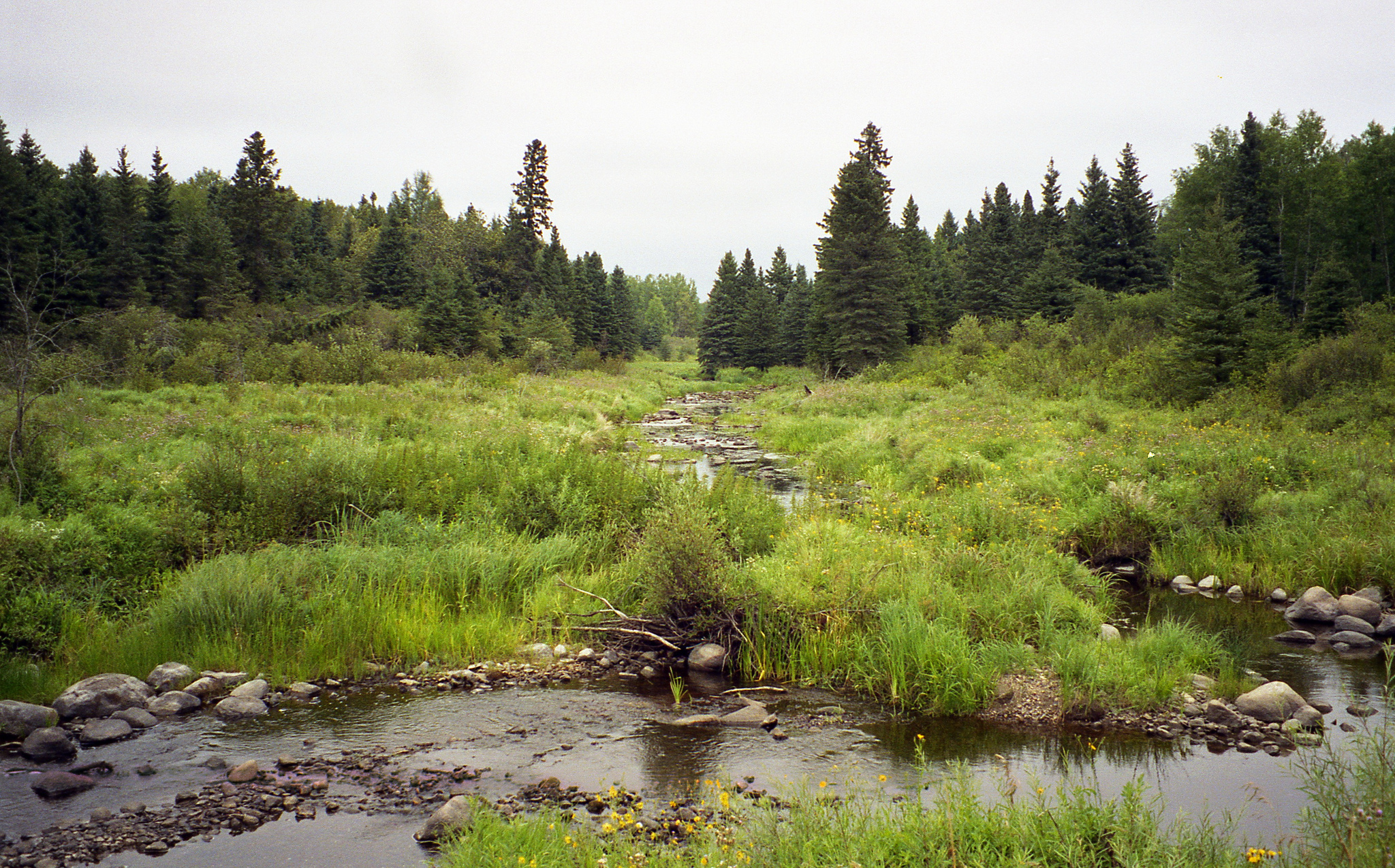Browse "Things"
-
Article
Biodiversity
Biodiversity is the variety of life (genetic, species and ecosystem levels) on Earth or some part of it. It includes all living forms, plants, animals and micro-organisms. It is the natural wealth of a region that provides resources and ecological services.
"https://d2ttikhf7xbzbs.cloudfront.net/media/media/525276c1-ee26-4c24-bc61-a4d499a68632.jpg" // resources/views/front/categories/view.blade.php
https://d2ttikhf7xbzbs.cloudfront.net/media/media/525276c1-ee26-4c24-bc61-a4d499a68632.jpg
-
Article
Bioethics
The word bioethics is formed from the Greek word for life (bios) and the traditional word for the systematic study of right conduct (ethics).
"https://development.thecanadianencyclopedia.ca/images/tce_placeholder.jpg?v=e9dca980c9bdb3aa11e832e7ea94f5d9" // resources/views/front/categories/view.blade.php
https://development.thecanadianencyclopedia.ca/images/tce_placeholder.jpg?v=e9dca980c9bdb3aa11e832e7ea94f5d9
-
Article
Biogeoclimatic Zone
For example, in British Columbia, the Coastal Western Hemlock Zone is one of 14 biogeoclimatic zones. It occupies high precipitation areas up to 1000 m elevation west of the coastal mountains from the Washington to Alaska borders and beyond.
"https://development.thecanadianencyclopedia.ca/images/tce_placeholder.jpg?v=e9dca980c9bdb3aa11e832e7ea94f5d9" // resources/views/front/categories/view.blade.php
https://development.thecanadianencyclopedia.ca/images/tce_placeholder.jpg?v=e9dca980c9bdb3aa11e832e7ea94f5d9
-
Article
Biogeography
Ecology is subdivided into 3 fields of study: autecology (relations of individual species or populations to their milieu), synecology (composition of living communities) and dynecology (processes of change in related communities).
"https://d2ttikhf7xbzbs.cloudfront.net/media/media/54274460-8bd9-4d7e-be56-42ebb9854f08.jpg" // resources/views/front/categories/view.blade.php
https://d2ttikhf7xbzbs.cloudfront.net/media/media/54274460-8bd9-4d7e-be56-42ebb9854f08.jpg
-
Article
Biography
Biographies are of importance not only because they document careers and achievements but also because they bring to the public consciousness many composers and performers who otherwise would remain mere names attached to scores, recordings, and concert programs.
"https://development.thecanadianencyclopedia.ca/images/tce_placeholder.jpg?v=e9dca980c9bdb3aa11e832e7ea94f5d9" // resources/views/front/categories/view.blade.php
https://development.thecanadianencyclopedia.ca/images/tce_placeholder.jpg?v=e9dca980c9bdb3aa11e832e7ea94f5d9
-
Article
Biography in English
Biography in English is the written record of a person's life. Canada's search for an identity has been long, continuous, sometimes so fervent that it becomes notorious, at its best positive as an effort of understanding.
"https://development.thecanadianencyclopedia.ca/images/tce_placeholder.jpg?v=e9dca980c9bdb3aa11e832e7ea94f5d9" // resources/views/front/categories/view.blade.php
https://development.thecanadianencyclopedia.ca/images/tce_placeholder.jpg?v=e9dca980c9bdb3aa11e832e7ea94f5d9
-
Article
Biography in French
Biography is the study of a life. It reveals a personality and an analysis of an individual's work in the context of the age in which it existed. Biography has always been popular in French Canada.
"https://development.thecanadianencyclopedia.ca/images/tce_placeholder.jpg?v=e9dca980c9bdb3aa11e832e7ea94f5d9" // resources/views/front/categories/view.blade.php
https://development.thecanadianencyclopedia.ca/images/tce_placeholder.jpg?v=e9dca980c9bdb3aa11e832e7ea94f5d9
-
Article
Biological Oceanography
Biological Oceanography is a branch of oceanography that studies living organisms (ie, the biota) in the sea in relation to their environments.
"https://development.thecanadianencyclopedia.ca/images/tce_placeholder.jpg?v=e9dca980c9bdb3aa11e832e7ea94f5d9" // resources/views/front/categories/view.blade.php
https://development.thecanadianencyclopedia.ca/images/tce_placeholder.jpg?v=e9dca980c9bdb3aa11e832e7ea94f5d9
-
Article
Biological Product
A biological product is a substance derived from a living organism and used for the prevention or treatment of disease. Biologicals are usually too complex for chemical synthesis by a laboratory. These products include antitoxins, bacterial and viral vaccines, blood products and hormone extracts.
"https://development.thecanadianencyclopedia.ca/images/tce_placeholder.jpg?v=e9dca980c9bdb3aa11e832e7ea94f5d9" // resources/views/front/categories/view.blade.php
https://development.thecanadianencyclopedia.ca/images/tce_placeholder.jpg?v=e9dca980c9bdb3aa11e832e7ea94f5d9
-
Article
Biology
Biological studies of individuals and groups of organisms can occur at various levels (eg, molecular, cellular, anatomical, functional, behavioural, ecological and evolutionary).
"https://d2ttikhf7xbzbs.cloudfront.net/media/media/8ff204ea-7793-42b9-9f34-39964ccf0d12.jpg" // resources/views/front/categories/view.blade.php
https://d2ttikhf7xbzbs.cloudfront.net/media/media/8ff204ea-7793-42b9-9f34-39964ccf0d12.jpg
-
Article
Biomass Energy
Biomass energy, or bioenergy, is the energy stored in biomass — that is, nonfossil organic materials such as wood, straw, vegetable oils and wastes from forestry, agriculture and industry, as well as municipal solid waste.
"https://development.thecanadianencyclopedia.ca/images/tce_placeholder.jpg?v=e9dca980c9bdb3aa11e832e7ea94f5d9" // resources/views/front/categories/view.blade.php
https://development.thecanadianencyclopedia.ca/images/tce_placeholder.jpg?v=e9dca980c9bdb3aa11e832e7ea94f5d9
-
Article
BIONESS
BIONESS (Bedford Institute of Oceanography Net and Environmental Sampling System) is a multiple-net sampler for ZOOPLANKTON and micronekton (pelagic animals 1-10 cm in length). It uses a new design concept, with nets arranged horizontally rather than vertically, as in earlier multiple-net samplers.
"https://development.thecanadianencyclopedia.ca/images/tce_placeholder.jpg?v=e9dca980c9bdb3aa11e832e7ea94f5d9" // resources/views/front/categories/view.blade.php
https://development.thecanadianencyclopedia.ca/images/tce_placeholder.jpg?v=e9dca980c9bdb3aa11e832e7ea94f5d9
-
Article
Biosphere Reserves in Canada
A biosphere reserve represents one of the world’s important ecosystems and is divided into three zones: a protected core zone (such as a park or wildlife area), a buffer zone around the core, and a transition zone that fosters sustainable economic and cultural activity. The World Network of Biosphere Reserves includes 686 sites around the world, 18 of which are in Canada. The network is part of the larger Man and the Biosphere Program of the United Nations Educational, Scientific and Cultural Organization (UNESCO). Biosphere reserves are designated by UNESCO to help conserve biodiversity, demonstrate sustainable development and build the local community’s capacity to deal with human and environmental issues.
"https://d2ttikhf7xbzbs.cloudfront.net/media/media/0b4a5b26-9047-48ec-97c2-3490843a5b3f.jpg" // resources/views/front/categories/view.blade.php
https://d2ttikhf7xbzbs.cloudfront.net/media/media/0b4a5b26-9047-48ec-97c2-3490843a5b3f.jpg
-
Article
Biotechnology
Biotechnology was defined by the 1981 Federal Task Force on Biotechnology (Brossard Committee) as the "utilization of biological processes, be they microbial, plant, animal cells or their constituents, for the provision of goods and services.
"https://development.thecanadianencyclopedia.ca/images/tce_placeholder.jpg?v=e9dca980c9bdb3aa11e832e7ea94f5d9" // resources/views/front/categories/view.blade.php
https://development.thecanadianencyclopedia.ca/images/tce_placeholder.jpg?v=e9dca980c9bdb3aa11e832e7ea94f5d9
-
Article
Birch
Birch (Betula), genus of trees and shrubs of birch family (Betulaceae). About 50 species are found in Arctic and northern temperate regions worldwide
"https://development.thecanadianencyclopedia.ca/images/tce_placeholder.jpg?v=e9dca980c9bdb3aa11e832e7ea94f5d9" // resources/views/front/categories/view.blade.php
https://development.thecanadianencyclopedia.ca/images/tce_placeholder.jpg?v=e9dca980c9bdb3aa11e832e7ea94f5d9
